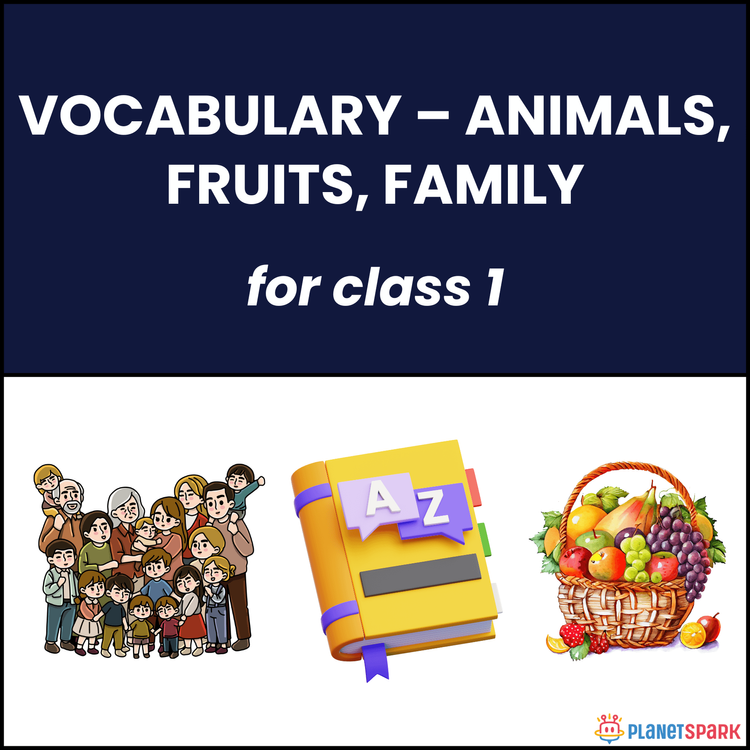Understand Relative Clauses Easily for English Communication

Relative clauses are essential for building detailed and precise sentences in English. They allow you to connect ideas smoothly and avoid repetition. In this blog, we will explore how relative clauses work, their types, and practical ways to use them in everyday communication.
Along the way, we’ll show you how PlanetSpark’s English courses can make grammar learning practical, interactive, and enjoyable for students of all ages.
What Are Relative Clauses?
Relative clauses are parts of a sentence that give more information about a noun or pronoun. They act like “mini-sentences” that describe someone or something without starting a new sentence. Think of them as tools that connect ideas smoothly and make your sentences richer and more precise.
Purpose: The main purpose of a relative clause is to add extra details about a person, place, thing, or time.
How they work: They usually start with relative words such as who, which, that, whom, whose, where, or when. These words “link” the extra information to the main noun.
Why they are useful: Without relative clauses, we would need to write multiple sentences, which can make our writing choppy or repetitive.
Example of a simple sentence without a relative clause:
I met a teacher. The teacher teaches science.
With a relative clause:
I met a teacher who teaches science.
Here, the relative clause “who teaches science” tells us more about the teacher in a single sentence.

Key Features of Relative Clauses
Relative clauses are an essential part of English grammar because they allow sentences to be more descriptive, precise, and connected. Here are the main features explained with examples:
1. They Describe Nouns or Pronouns
Relative clauses give additional information about a noun or pronoun, helping the reader or listener understand exactly who or what you are talking about.
Example:
The book that I borrowed is amazing.
In this sentence, the clause “that I borrowed” tells us which book is being referred to. Without this clause, the sentence “The book is amazing” would be vague, leaving the reader unsure which book is meant.
Tip: Always check that your relative clause clearly describes a noun or pronoun in your sentence to avoid confusion.
2. They Often Follow the Noun They Describe
A relative clause usually comes immediately after the noun it describes. This placement makes the sentence clear and keeps the extra information closely connected to the main idea.
Example:
The girl who won the prize is my classmate.
Here, the clause “who won the prize” comes right after “the girl” and explains which girl is being referred to. If you move it elsewhere, the sentence may become confusing.
Tip: Positioning is important. Always place the relative clause as close as possible to the noun it describes.
3. They Can Be Defining or Non-Defining
Relative clauses are of two main types, and each type has a different role in a sentence:
Defining Relative Clauses:
These provide essential information about the noun. Without the clause, the sentence would lose its meaning.
Example: The teacher who teaches math is very kind.
(Here, “who teaches math” is necessary to know which teacher we mean.)Non-Defining Relative Clauses:
These add extra, non-essential information. They are usually separated by commas and can be removed without changing the main meaning of the sentence.
Example: My brother, who lives in Delhi, is visiting us next week.
(Even without “who lives in Delhi,” the sentence still makes sense.)
Tip: Always remember to use commas for non-defining clauses and avoid them for defining clauses.
Ready to take your English to the next level? PlanetSpark’s interactive courses make learning grammar fun, practical, and easy.
4. They Use Relative Pronouns as Connectors
Relative pronouns link the clause to the noun or pronoun it describes. Choosing the correct relative pronoun is key to forming proper sentences:
Who → people
Example: The student who answered correctly received a reward.
Whom → object of a verb or preposition (people)
Example: The man whom you met yesterday is my uncle.
Whose → possession
Example: I met a girl whose father is a musician.
Which → things or animals
Example: The car which is parked outside belongs to my friend.
That → people, animals, or things (mostly in defining clauses)
Example: The dog that barked loudly is very friendly.
Where → places
Example: This is the park where we first met.
When → time
Example: I remember the day when we went to the beach.
Tip: Matching the right relative pronoun with the noun type (person, thing, place, or time) ensures grammatical accuracy and clarity.
How Relative Clauses Improve Communication
Relative clauses are not just grammar rules and they are powerful tools that make your writing and speaking clear, engaging, and professional. Let’s explore the key benefits in detail:
1. Improves Clarity
Relative clauses help you explain exactly which person, place, or thing you are talking about. Instead of leaving your audience guessing, they provide the necessary detail in a single sentence.
Example:
Without relative clause: I met a man. The man is a doctor.
With relative clause: I met a man who is a doctor.
In the second sentence, it is immediately clear which man is being referred to. Using relative clauses reduces confusion and makes your sentences more precise.
Tip: Whenever you introduce a person, place, or object in your sentence, ask yourself: “Do I need to clarify which one?” If yes, a relative clause is your solution.
2. Enhances Storytelling
Relative clauses make your sentences richer and more descriptive, helping your writing or speech flow naturally. They allow you to add details about characters, settings, and events without breaking your narrative into short, choppy sentences.
Example:
Without relative clause: I saw a park. The park had beautiful flowers. The park was crowded with children.
With relative clause: I saw a park that had beautiful flowers and was crowded with children.
By combining multiple ideas into one sentence, you create a smoother, more engaging story. This is especially useful in essays, storytelling, and presentations.
Tip: Use relative clauses to describe people, places, objects, or events when telling a story. It makes your sentences vivid and interesting.
3. Avoids Repetition
One of the easiest ways to make writing or speaking sound professional is to avoid unnecessary repetition. Relative clauses allow you to refer to the same noun without repeating it.
Example:
Without relative clause: The book is very interesting. The book is on the table.
With relative clause: The book that is on the table is very interesting.
This not only shortens your sentences but also makes them easier to read and understand. It also prevents your audience from getting bored with repeated words.
Tip: Identify repeated nouns in your sentences and try replacing them with a relative clause to make the sentence cleaner.
4. Professional Communication
Correctly using relative clauses makes your writing and speaking more polished and fluent. In emails, reports, essays, or presentations, using relative clauses demonstrates command over English grammar and enhances credibility.
Example in professional writing:
Without relative clause: I worked with a team. The team delivered the project on time.
With relative clause: I worked with a team that delivered the project on time.
This version sounds more professional and connected, which is crucial in workplace communication, academic writing, and formal correspondence.
Tip: Whenever you are explaining something important or giving details in professional communication, relative clauses can make your sentences precise, connected, and smooth.
Everyday Example for Practice
Without relative clause:
I visited a city. The city is famous for its lakes.
With relative clause:
I visited a city which is famous for its lakes.
Notice how the second sentence combines both ideas seamlessly. The sentence flows naturally, avoids repetition, and clearly identifies the city being talked about.
Practice Idea: Take any two simple sentences from your daily life and try combining them using a relative clause. Over time, it will become second nature.
By learning to use relative clauses, you can combine ideas effortlessly, making your sentences smoother and more natural. Discover how opposites make learning fun with our “Antonyms Made Easy” worksheet and boost your grammar skills today!
Relative Clauses in Everyday English
Relative clauses are not just for textbooks and they are used in daily life, whether in conversations, emails, storytelling, or professional reports. Learning how to use them naturally makes your English clear, precise, and fluent.
1. At Home
Relative clauses help describe people, objects, or events in your household or personal life. They make your sentences more expressive and informative.
Example:
The cake that you baked is delicious.
Here, the relative clause “that you baked” tells exactly which cake is being talked about. Without it, someone might not know which cake you mean.
Tip: Use relative clauses to give more detail about meals, chores, or family members.
2. At School
In a school setting, relative clauses help describe students, teachers, activities, or results. They make communication more precise and specific.
Example:
The student who answered correctly won a prize.
The clause “who answered correctly” specifies which student won. Without the clause, the sentence would leave the reader guessing.
Tip: Use relative clauses to highlight achievements, assignments, or important events in school.
3. At Work
In professional communication, relative clauses are essential for writing reports, emails, and presentations. They allow you to include details without making your sentences long and confusing.
Example:
The report, which was submitted yesterday, needs revision.
Here, the clause “which was submitted yesterday” provides extra information about the report. The commas indicate it is non-essential, meaning the sentence still makes sense without it.
Tip: In workplace writing, relative clauses make your communication polished, concise, and professional. They help convey exact information efficiently.
4. Practice Idea
The best way to master relative clauses is through daily practice. Observe people, objects, or situations around you and describe them using relative clauses.
Examples for practice:
The book that I am reading is very interesting.
The teacher who helped me yesterday is very kind.
The park, which is near my house, is perfect for morning walks.
Tip: Start small. Combine two simple sentences into one using a relative clause. Gradually, it will become a natural part of your English.

PlanetSpark’s Approach to Grammar
At PlanetSpark, learning grammar is not boring. Our courses are designed to:
Teach real-life English through engaging stories and examples
Focus on interactive learning with AI feedback
Help students practice writing confidently
Make grammar easy, practical, and fun for all ages
Conclusion
Relative clauses are powerful tools that make your English clear, detailed, and engaging. By using them, you can connect ideas smoothly, describe people, places, and things precisely, and avoid repeating words unnecessarily. They are essential in everyday communication, whether at home, school, or work. Mastering relative clauses also enhances storytelling, professional writing, and fluency in conversations. Regular practice and careful observation of how they are used in reading and speaking will help you use them naturally and confidently. PlanetSpark’s interactive courses make learning relative clauses fun, practical, and easy for students of all ages. Start applying these tips today to improve your English effortlessly.
Frequently Asked Questions
Relative clauses are parts of a sentence that describe a noun or pronoun using words like who, which, or that. They make sentences clear, detailed, and connected, improving communication.
You can combine simple sentences into one using relative clauses. For example, instead of saying “I met a boy. The boy is my neighbor,” say “I met a boy who is my neighbor.
Yes, they are essential in emails, reports, and presentations. They make communication polished and precise, helping convey extra details efficiently without repetition.
Absolutely. PlanetSpark teaches relative clauses through interactive stories, examples, and exercises, making learning fun, practical, and easy to understand for students of all ages.
Use “who” for people, “which” for objects or animals, “where” for places, “when” for time, and “whose” for possession. “That” can be used for people, animals, or things in defining clauses.
Defining clauses give essential information about a noun, while non-defining clauses add extra information and are usually separated by commas. Both make sentences more descriptive.
Yes, they make sentences richer and smoother, allowing you to speak with clarity and fluency. With practice, relative clauses become a natural part of everyday conversations.
Download Free Worksheets
Personalized Communication Report
Record a video to get a AI generated personalized communication report for your child

Hi There, want to try these
tips for your child with
LIVE with our expert coach?
Let's check your child's
English fluency

